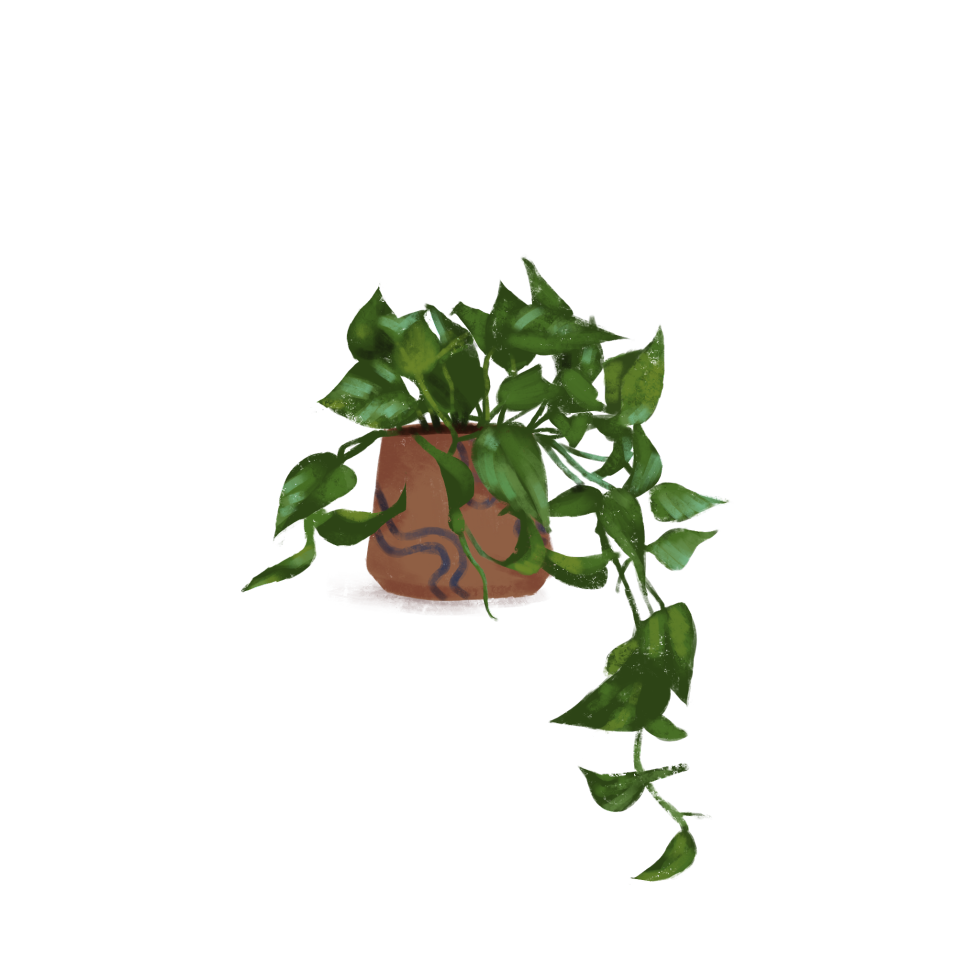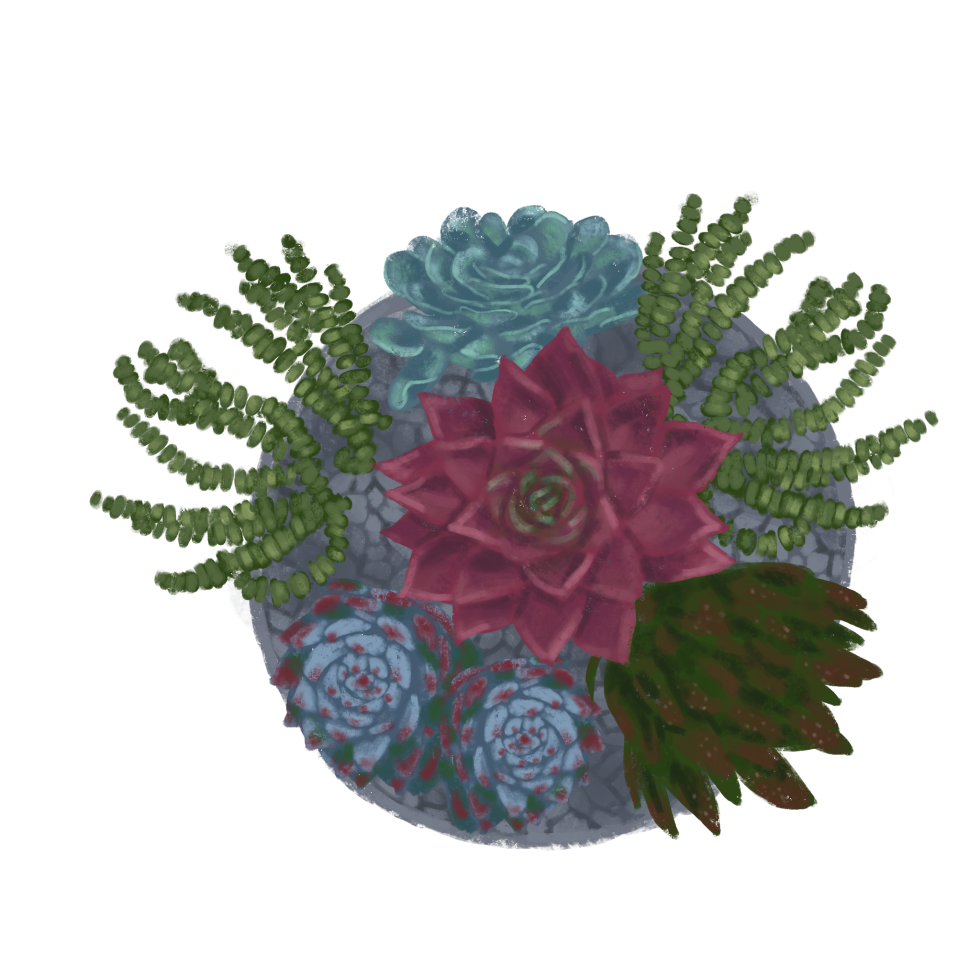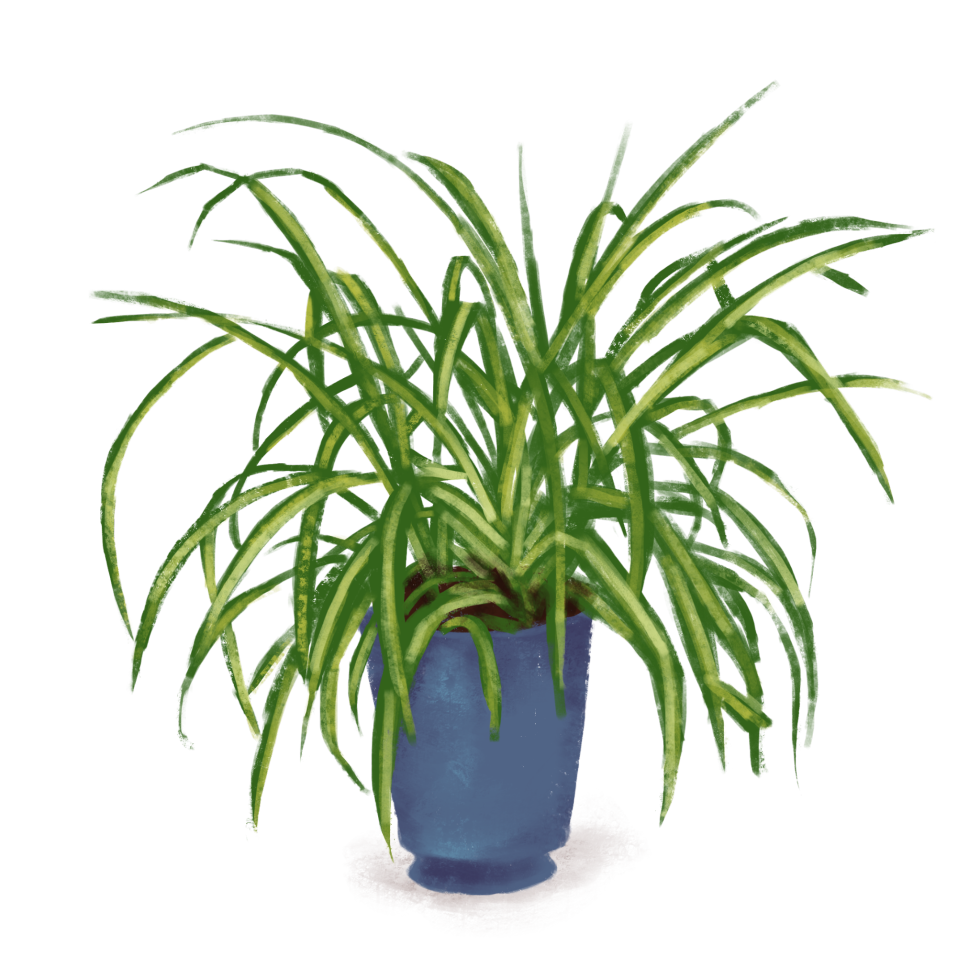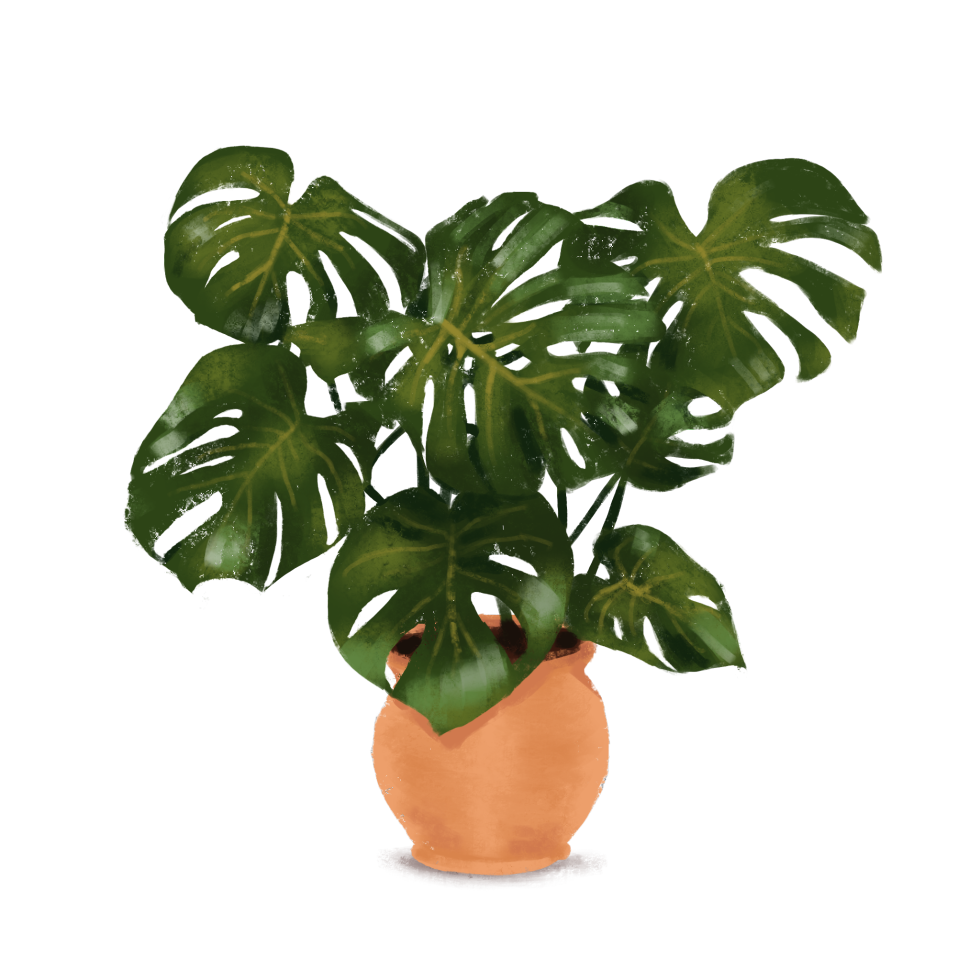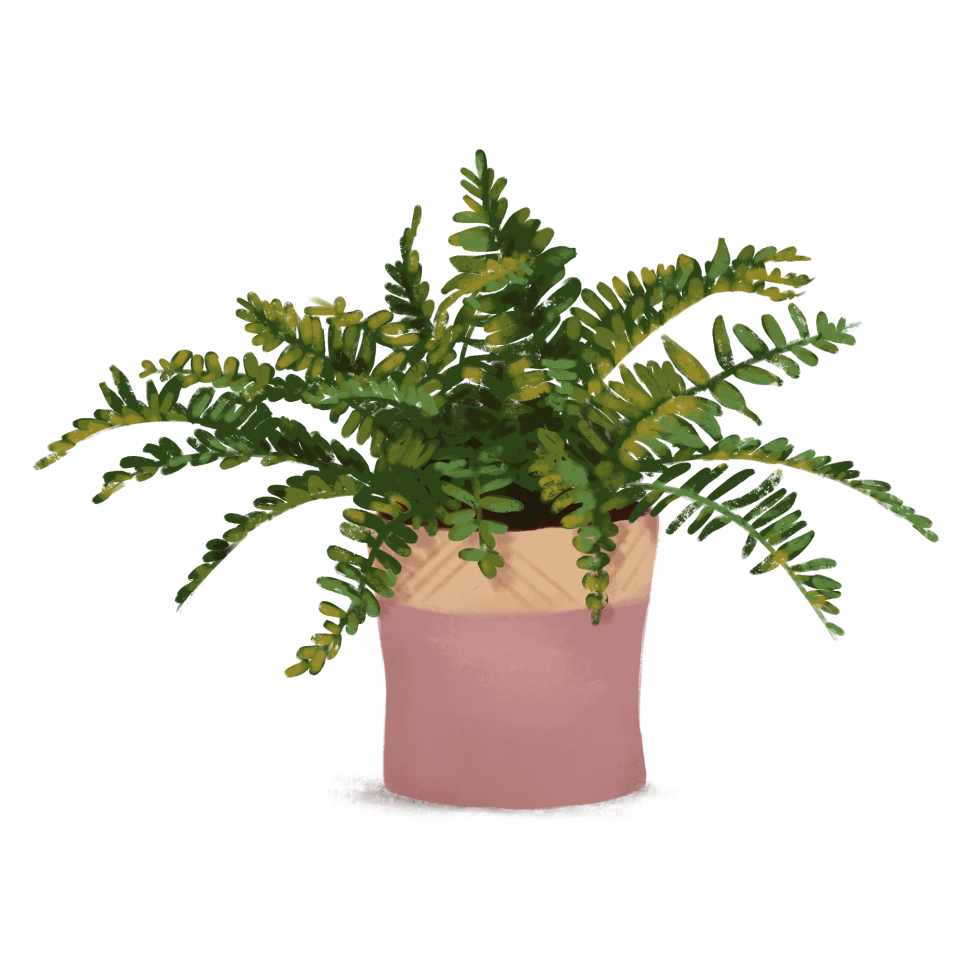Plant Parenthood: A Beginner’s Guide to Houseplants
Illustrations by Roshni Capewell
Story by Thalia Coulter
With their late-afternoon sunsets and bare trees, dark, dreary Pacific Northwest winters can feel endless. Houseplants, however, can help. With a quick trip to a plant nursery — and a little dedication — you, too, can bring a breath of fresh air to your own home.
A sales associate at beloved Bellingham plant shop babygreens, as well as a self-proclaimed “resident plant expert,” Cavan Schmid recommends low-maintenance houseplants as ideal for beginners. A tropical paradise tucked away in a brick building in downtown Fairhaven, babygreens perfectly represents the transformative magic of houseplants. “Having a little bit of greenery, a little bit of life in your home, can do so much,” Schmid said. “It can take such a drab space and just turn it into a jungle.”
Beyond aesthetics, houseplants also improve mental health and air quality. Being surrounded by living things can help to combat feelings of loneliness and lack of purpose in life, and houseplants are a good low-maintenance option. “I just find a lot of joy from houseplants,” Schmid said. “Watching them grow and caring for this living thing…”
Pothos — The cubicle heroes
Care Difficulty: 1
Light: Bright, indirect lighting
Watering needs: Water when soil is dry or when leaves begin to droop
Known for their resilience, pothos plants are a great choice for the new plant parent. They can grow in a wide range of lighting conditions, including fluorescent lights, making them an excellent choice for indoor spaces with minimal natural lighting. Pothos plants grow quickly, and their long, trailing vines are sure to transform any indoor space. They also come in various forms, with each form boasting its own leaf colorings and patterns, usually a mix of dark green, light green, white and yellow. If you have furry friends at home, be sure to keep your new pothos plant out of reach, as they are toxic to dogs and cats.
Succulents — The latchkey kids
Care Difficulty: 1
Light: Bright, direct light
Watering needs: Water very infrequently, especially in winter
Succulents naturally grow in dry, arid climates around the world, and come in a variety of colors, shapes and sizes. Their thick leaves and stems are adapted to store water, making them quite drought-resistant. Succulents need bright lighting and very little water. Most succulents are happy to sit on a windowsill for weeks without any care, making them a good fit for frequent travelers or forgetful plant parents. Succulents grow best in a porous, sandy soil mixture that aids in water drainage and simulates their various natural habitats.
Spider plant — The plant that keeps on giving
Care Difficulty: 2
Light: Moderate, indirect lighting
Watering needs: Water just before soil dries out completely
Spider plants are popular houseplants, known for their long, drooping leaves in varying shades of white and green. These grasslike plants grow quickly and are relatively easy to care for. Can’t get enough of your new spider plant? You’re in luck, because healthy spider plants will produce offshoots called “pups” that can be cut from the mother plant and replanted. Spider plants are non-toxic to cats and dogs, though it may still be best to keep them out of reach. This author can attest that cats love snacking on spider plant leaves, which is not great for either the plants or the cat’s digestive health.
Monstera — The Swiss cheese plant
Care Difficulty: 2
Light: Bright, indirect lighting
Watering needs: Water when soil is dry
Monstera plants are famous for their large leaves with irregular holes – called fenestrations – that evolved as an adaptation in the monstera’s native rainforest habitat. Due to the unique appearance of their fenestrations, monstera plants tend to be highly sought-after. However, patience is key, as fenestrations usually only develop on mature, healthy plants. Monstera plants are mesmerizing to look at, but keep them out of reach of babies, dogs and cats, as the plants are toxic to them.
Ferns — The dinosaur plants
Care difficulty: 3
Light: Moderate, indirect light
Watering needs: Water frequently, before soil dries out completely
Millions of years ago, ferns were a primary food source for herbivorous dinosaurs. Today, they tend to adorn bookshelves, desks and side tables. Ferns come in many varieties, and different varieties come with different needs. Most ferns, however, aren’t too difficult to keep as houseplants, so long as they are watered consistently and kept out of direct light to avoid burning their fragile fronds. Ferns thrive in humidity, so make sure to keep them away from heaters and air ducts.
Tips and Tricks:
Don’t overwater your plants! A little water goes a long way — soil should never be completely waterlogged.
Choose a pot with sufficient drainage to help prevent root rot, a harmful condition that occurs when plants sit in drenched soil for too long.
Fertilize houseplants in spring and summer months to help with new growth. Reference the care instructions for your plant to determine the proper fertilizer.
Has your otherwise healthy plant mysteriously started wilting and stopped growing? It may have become root-bound, in which case it needs to be repotted in a larger container.

